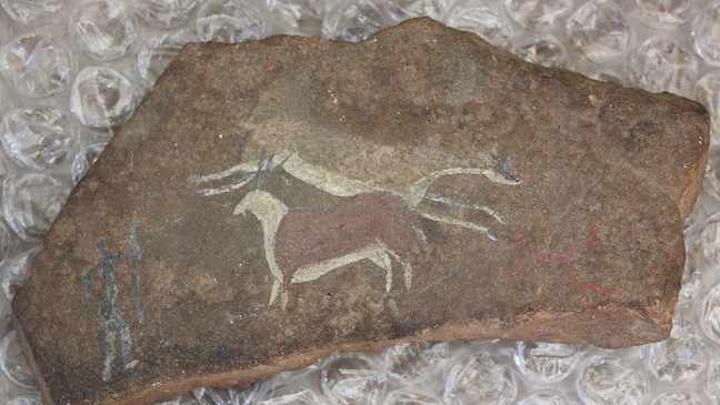Africa-Press – South-Africa. Durban – Experts are investigating the authenticity of a piece of San rock art which had been put up for sale on social media.
This is after a 48-year-old suspect was arrested by the Hawks (Directorate for Priority Crime Investigation) in Port Shepstone, working with the SAPS K9 Unit. They pounced on the suspect for illegally trading in an archaeological item and contravening the National Heritage Resources Act. It is illegal to sell heritage artefacts in South Africa.
The Hawks were alerted to the activity taking place online as the suspect tried to sell the San rock art on Facebook and other websites.
The suspect was scheduled to appear in court last Monday, but Hawks spokesperson, Lieutenant Colonel Philani Nkwalase, said the matter was not put on the court roll because of outstanding reports from experts who are examining the piece of rock art and determining where it could have been taken from.
“The piece of rock art is being authenticated by experts, who will also investigate how such a piece could be chiselled out, from where it may have originated and the value of the rock art.
“The suspect was released on police bail of R1000 as the investigations continue,” said Nkwalase.
Alternative charges may be brought if the confiscated rock art is found to be fake.
San rock paintings are regarded as a key cultural tourism resource, especially in the Drakensberg where about 40 000 individual rock paintings have been recorded at 600 different caves and overhang sites between Royal Natal and Bushman’s Neck, with many estimated to be around 3000 years old.
In the Cathedral Peak Valley, the Didima Gorge alone, known as the valley of the Bushman, has more than 1000 painted pictures in the caves around the valley.
San rock art is also found in the Cederberg mountain area, Eastern and Northern Cape, as well as in Limpopo.
Rock art sites are carefully protected with regulations prohibiting leaning anything against paintings, pouring liquid or similar defacement on the paintings, drawing or scratching on the paintings or rock face, stirring up dust when walking through such sites, camping in or near sites with paintings, removing any artefacts or stone tools and touching the paintings.
Additional information : Drakensberghikes.com
The Independent on Saturday






